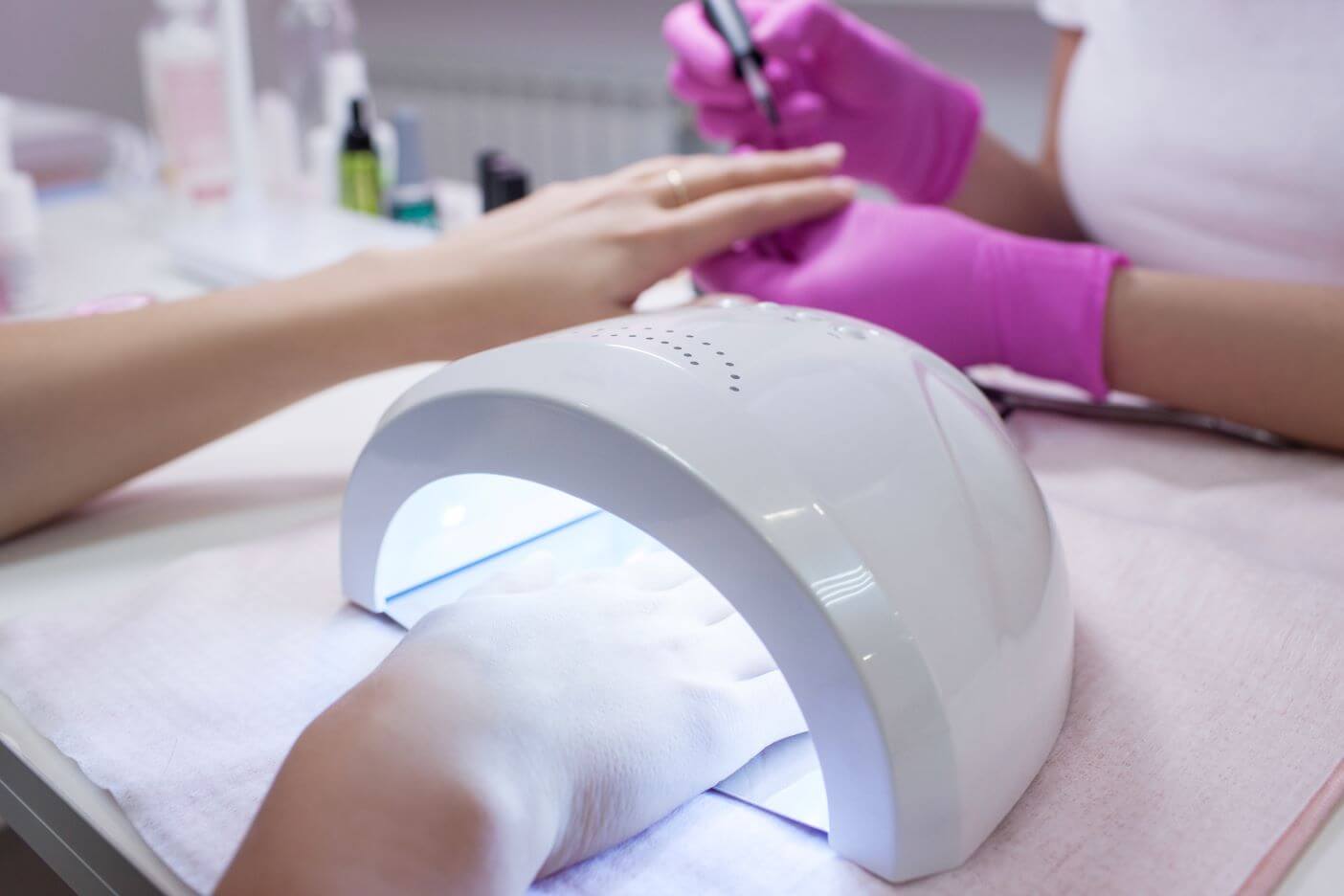Gel manicures are popular, and they’re a great way to show your fashion sense and personality. Unfortunately, they may also damage skin and nails. According to Dr. Jacqueline Watchmaker of U.S. Dermatology Partners in Phoenix and Scottsdale, Arizona, “Gel manicures look and feel amazing, but as anyone who’s ever received a manicure will tell you, the process of removing gel nail polish can be uncomfortable and leave nails looking less than their best. When received regularly, gel manicures can cause nails to become thin and easily broken. In addition to the damage caused by removing gel manicures, the products used to apply and remove these nail treatments can also adversely impact nail health. Like most things, receiving gel manicures from time to time is perfectly fine, but always having nails coated in gel nail polish and removing and replacing it regularly can negatively impact the health of your nails.” In this blog, Dr. Watchmaker discusses the common risks and concerns associated with gel manicures and provides tips for keeping nails healthy.
Common Risks Associated with Gel Manicures
Speaking about the common effects of gel nail polish, Dr. Watchmaker says, “Each person’s tolerance of gel nail polish will differ. Some people have naturally thicker nails and tougher skin, so they may not notice any adverse reactions right away. Over time, repeated gel manicures change even the thickest nails and strongest skin.” Some of the common ways that gel manicures impact nail and skin health include:
- Brittle Nails – exposure to chemicals in gel polishes, nail polish removal products, and nail filing and buffing can lead to increased brittleness, splitting, peeling, and cracking.
- Nail thinning – repeated removal of gel nail polish can cause nails to become thinner and more easily broken.
- Nail discoloration – gel nail polish removal may cause white spots or other discoloration of the nail.
- Allergic reaction – many people are allergic to acetone, which is required to remove gel polish, so if you’re allergic to acetone, gel manicures (or any type of manicure) may not be a good option for you.
- Infection – improperly cleaned tools or unsanitary work conditions may cause irritation and inflammation of the skin.
- Skin peeling – the skin of the nail beds can be damaged by repeated gel manicures, especially for those who have sensitive skin.
- Accelerated Signs of Aging – exposure to UV rays also leads to accelerated signs of aging like wrinkles, fine lines, dark spots, and uneven skin tone and texture.
Skin Cancer Risk
One of the most serious concerns related to gel manicures is the risk of skin cancer. The lamps used to dry nails during gel manicures utilize ultraviolet (UV) radiation. Like sun exposure, the UV rays in drying lamps cause DNA damage to the skin. There are two common forms of UV rays, UVA and UVB. UVB rays have shorter wavelengths and are associated with sunburns. UVA rays are longer and commonly linked to skin aging. Both UVA and UVB rays can cause skin cancer. UVB rays lead to skin cancers on the outer parts of the skin, but UVA rays can cause damage deeper within the skin’s layers where most forms of skin cancer develop. While there is a relatively low amount of exposure to UV radiation received from nail drying lamps when compared to sunlight and tanning beds, UV lamps rely on UVA rays, meaning they potentially can lead to skin cancer, and repeated use can increase that risk.
Tips for Avoiding Nail Damage from Gel Manicures
Moderation is the key to enjoying beautiful gel manicures and minimizing health risks. According to Dr. Watchmaker, “The easiest way to minimize your risk for skin and nail damage is to limit the number of manicures you receive and make sure you give your nails a break to heal between gel manicures. You can leave your nails completely free of polish or switch to traditional nail polish for a week or two between manicures.”
In addition to receiving gel manicures in moderation, the following tips can also help to minimize risk:
- Apply sunscreen – use a broad-spectrum sunscreen that protects against both UVA and UVB rays. Choose a sunscreen with an SPF of 30 or higher and apply it to your hands and fingers before your manicure. You should apply sunscreen at least fifteen minutes before your manicure and not more than two hours before. A good option for all skin types is the MD Skin Essentials Tone Shield. It’s broad-spectrum, SPF 40, and contains antioxidants to prevent DNA damage caused by UV exposure.
- Ensure cleanliness – your manicurist should be cleaning and sanitizing their work surfaces and manicure tools between each client. If you notice your manicurist isn’t switching tools between customers or there is a general state of uncleanliness, you may want to switch to a different nail salon or talk to your manicurist to ensure they are following appropriate guidelines.
- Avoid chipping away polish – when removed using acetone, gel polish is dissolved protecting nails from damage. Chipping and peeling away gel nail polish causes it to pull at the nail. This is a major contributor to nails becoming brittle or discolored.
- Use acetone appropriately – don’t soak the full hand or fingers in acetone as this can damage the surrounding skin. Instead, apply acetone only to the nail. A simple way to accomplish this that many salons take advantage of is by applying acetone nail polish to a cotton ball. Then, place the cotton ball directly onto the nail and wrap each fingertip in tin foil. Allow the acetone to dissolve the gel nail polish for 10 to 15 minutes, and it will slide off easily.
Treating Nail Damage
If nails are damaged from regular gel manicures, it’s important to take time to treat and strengthen them. After gel nail polish is removed, apply petroleum jelly or other occlusive moisturizers. These products create a barrier over the skin, preventing water loss, allowing skin and nails to heal, soothing inflammation, and delivering increased hydration. Apply your occlusive moisturizer at least twice a day as you’re allowing nails to rest between manicures. You should also drink plenty of water. Being hydrated from the inside out improves skin’s moisture levels. Finally, wear gloves when you’re doing housework, yard work, or if you’re going to be out in the cold. This protects skin and nails from further damage as you allow nails to heal.
Talk to a Dermatologist
If you’re concerned about the appearance or health of your nails and skin, a dermatologist can help you prevent or address issues that arise. If you want to schedule a visit at U.S. Dermatology Partners, simply take a few moments to complete our online scheduling request form. One of our team members will be in touch to finalize the details of your visit.
Find a location near me
or


